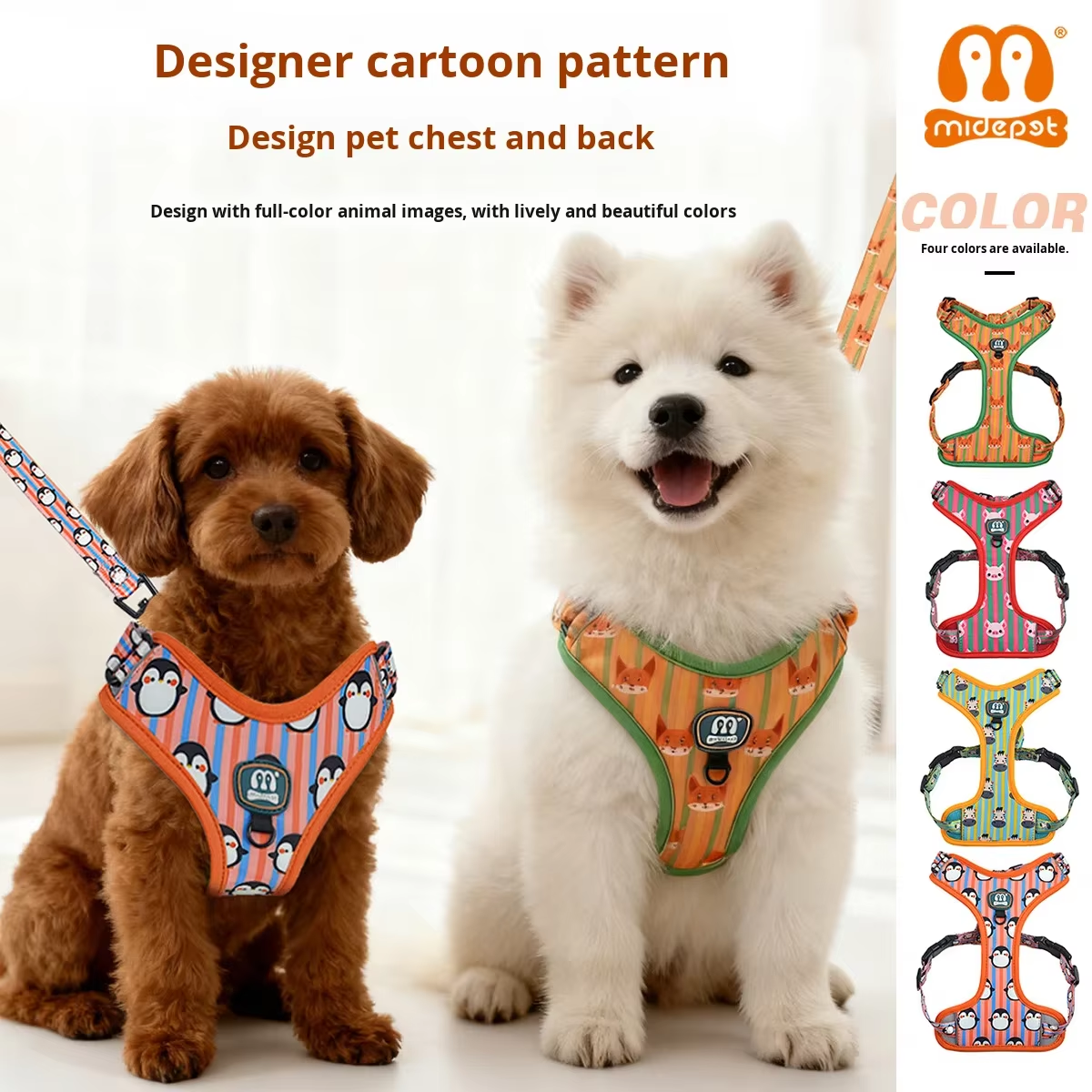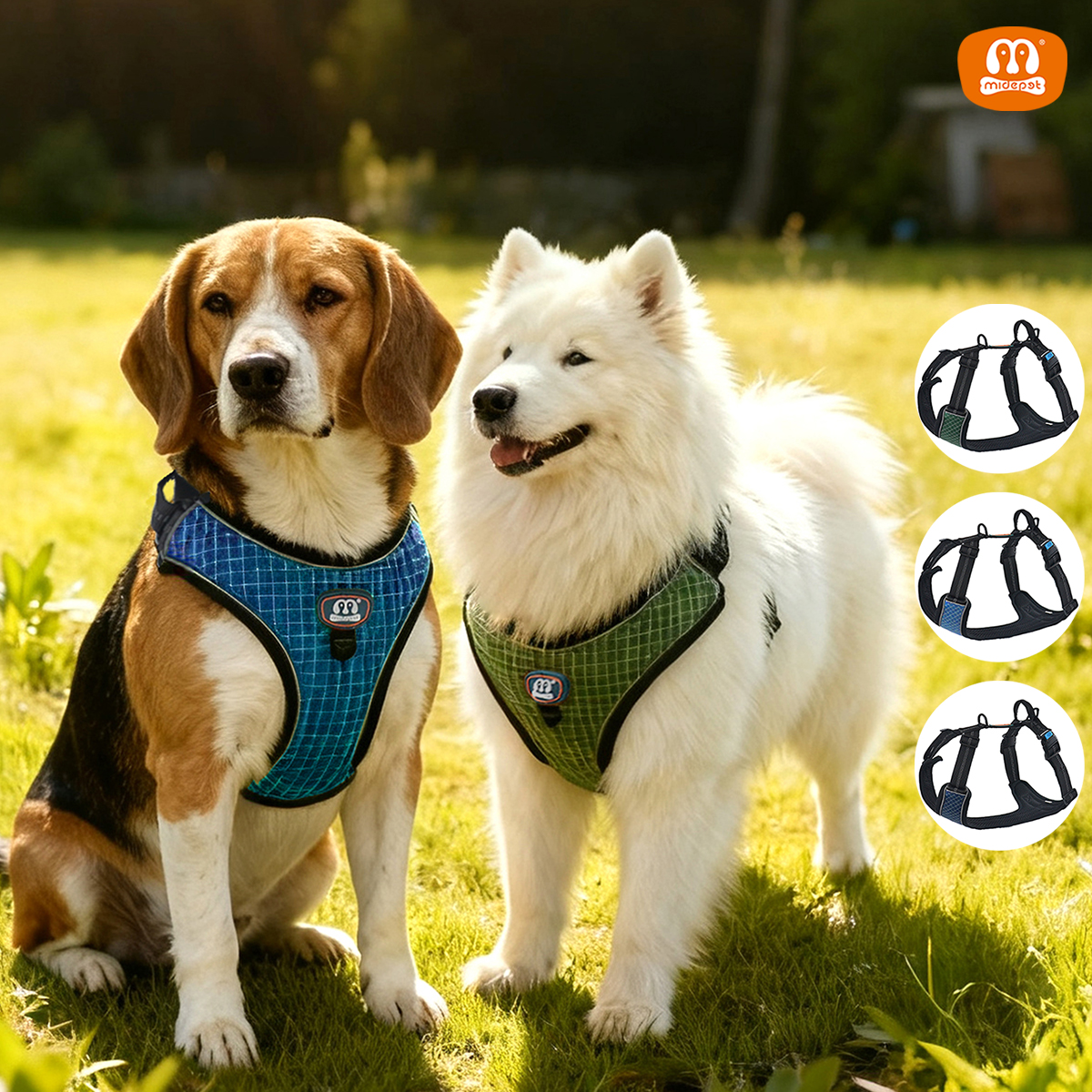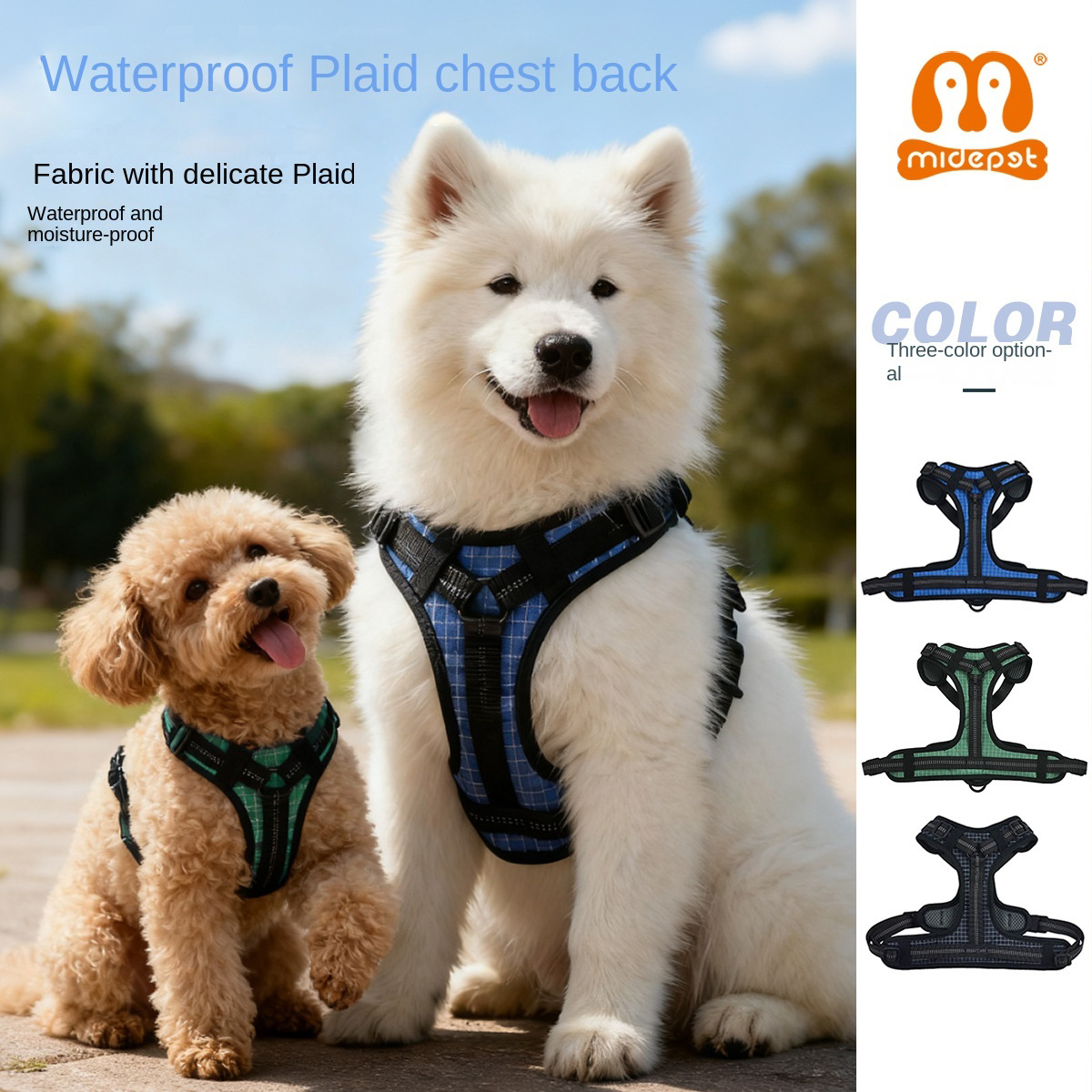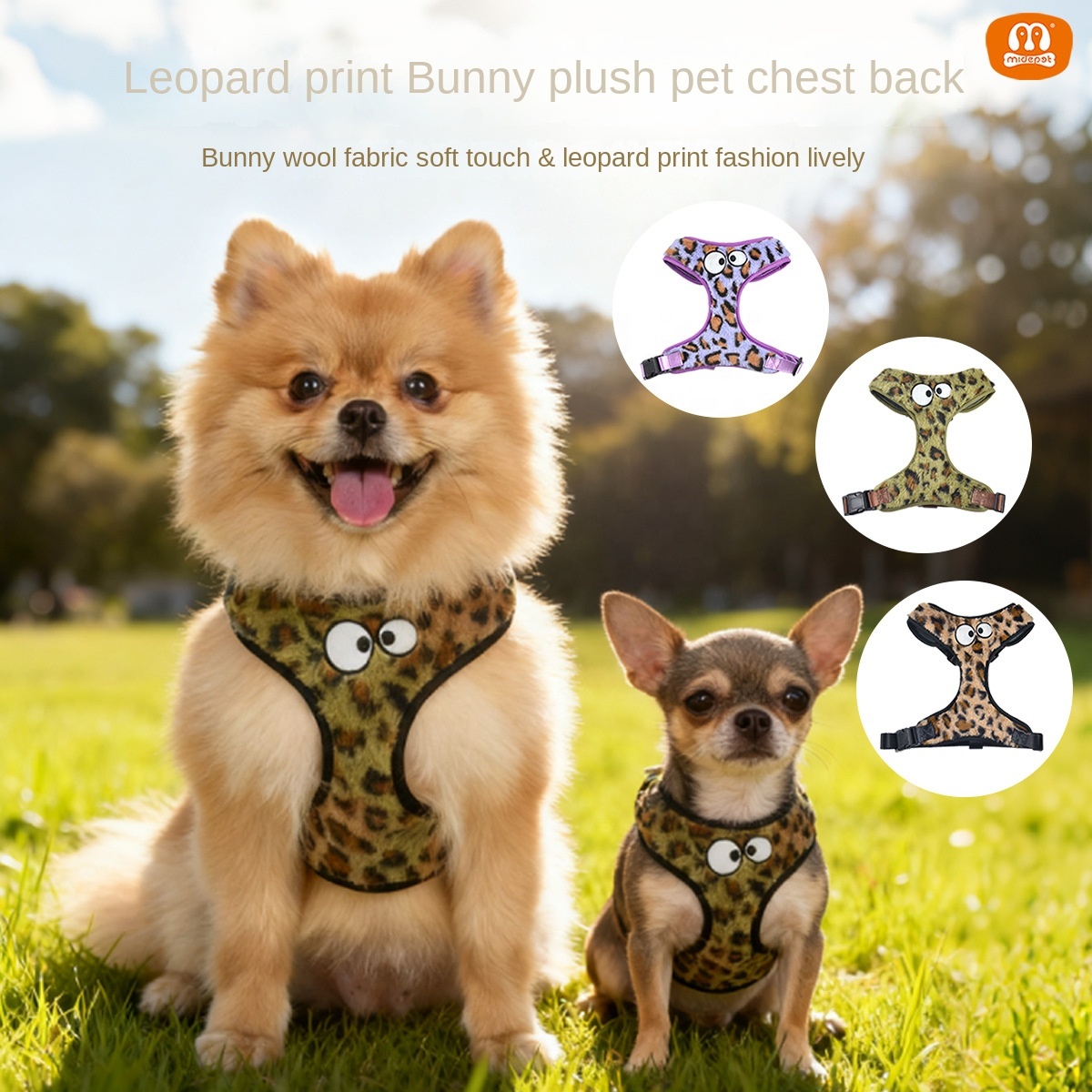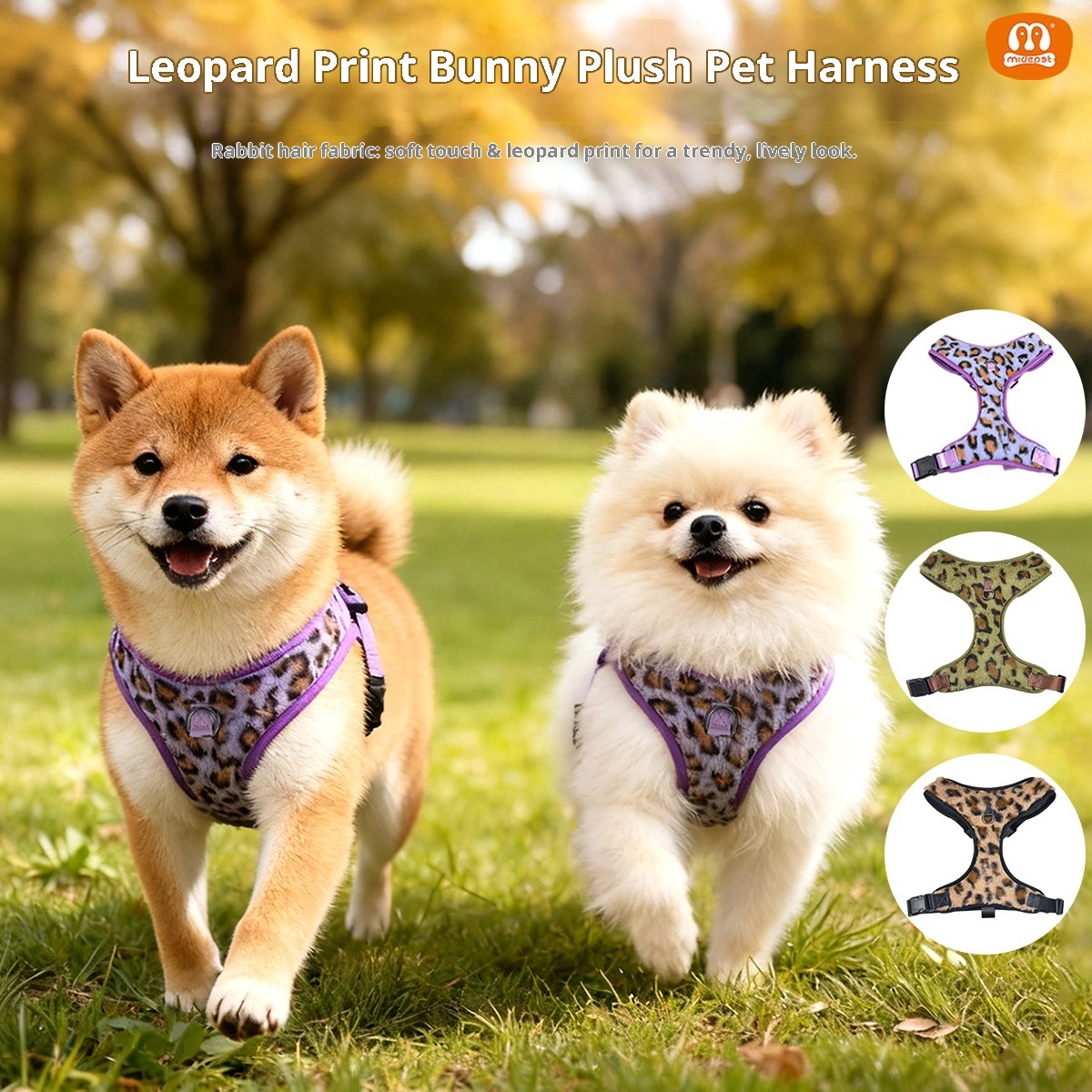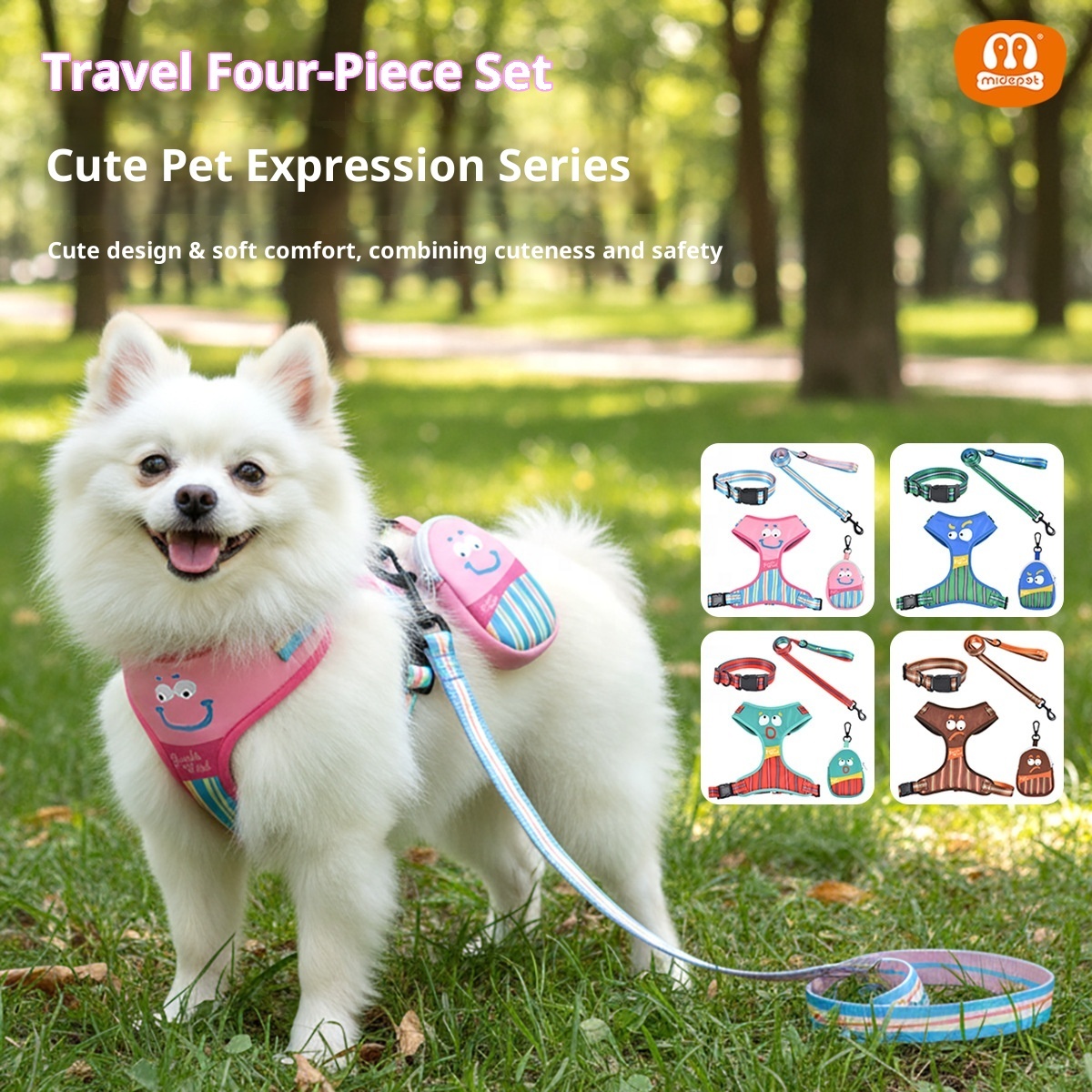Cat Harness vs Dog Harness
Cat Harness vs Dog Harness

Introduction
When it comes to choosing the right harness for your pet, cats and dogs have different needs. Each pet has its own unique size, activity habits and comfort needs, so choosing the right harness is critical to ensuring their comfort and safety. This article will help you understand the key differences between cat and dog harnesses, and provide some useful tips to help you make an informed choice, especially if you have both small dogs and cats.
Recognize the basic differences between cats and dogs harness
Design Differences
Cat harnesses are usually designed to be lighter and softer. This is because cats are smaller and more flexible, and the harness needs to be able to adapt to the cat's way of moving and not cause discomfort to the cat. Cat harnesses are usually made of soft materials and are designed with the cat's comfort in mind.
Dog harnesses may be stronger, more durable and suitable for dogs of different sizes. Dogs vary greatly in strength and size, so dogharnesses are often designed to be sturdier to provide better control and support. They may also have more adjustable features to accommodate dogs of all sizes.
Functional Differences
Cat harnesses focus on safety and comfort for both indoor and outdoor activities. Cat harnesses are often designed to prevent cats from breaking free and to provide a comfortable wearing experience, taking into account cats' heightened sensitivity to comfort.
Dog harness focuses on providing more control and support, and is particularly suitable for long walks and training. Due to the high frequency of dog walks and activities, harnesses often need to have greater durability and better control to cope with the dog's strength and pulling.
 Characteristics of Cat Harness
Characteristics of Cat Harness
Comfort
The design focuses on softness and adaptation to the cat's body structure. Cat harnesses are often made of lightweight materials to reduce friction on the cat's skin and to ensure that they do not constrict the cat's movements during activity.
Adjustable straps and ventilated designs may be included to provide better fit and comfort. Many catharnesses also use mesh fabric to increase air circulation and keep the cat's body temperature moderate.
Safety
A design that prevents the cat from breaking free is crucial. Cat harnesses are often designed with multiple adjustment points to ensure the harness fits snugly around the cat's body, thus preventing the cat from breaking free while on a leash.
Reflective materials increase nighttime visibility. For outdoor activities, a harness with reflective material increases visibility at night and improves cat safety.
Scenarios
Indoor training, outdoor adventures. Cat Harness is not only suitable for training at home, but also for exploring outside with your cat. A properly fitted Harness allows the cat to feel comfortable and unencumbered during walks.
It is especially suitable for cats that are used to moving around on a leash. If cats are already used to wearing a Harness, choosing a suitable Harness can enhance their comfort and sense of security.
Characteristics of Dog Harness
Control
Provides better control and traction. Designed with the dog's strength and pulling characteristics in mind, dog harnesses can effectively control the dog's activities and behavior.
Ideal for dogs that pull and pull strongly. For dogs with greater strength, the sturdy harness ensures you have more consistent control of your dog during walks.
Durability
Made of wear-resistant materials for everyday use. Dog harnesses are often made with more abrasion-resistant materials to cope with strong dog pulling and prolonged use.
Designed to support dogs of different sizes and strengths. From small dogs to large dogs, harnesses need to be designed with different body sizes and strengths in mind to provide adequate support and comfort.
Comfort
Breathable materials and adjustable straps add comfort. To prevent scuffing and abrasion, dog harnesses are often made of breathable materials with adjustable straps to accommodate the dog's size and activity needs.
Suitable for extended use. Designed with comfort for extended wear in mind to ensure the dog does not feel uncomfortable during use.

How to choose the right harness
Consider your pet's activity habits
Is the cat used to being on a leash? Make sure the cat is used to wearing a harness and that the harness is designed to meet its activity needs.
How often and how hard does the dog walk? Choose a suitable harness according to the frequency and intensity of the dog's walks and make sure it can withstand the dog's strength and pulling.
Sizing and Adjustment
How to accurately measure the body size of cats and dogs. Accurately measure your pet's body size to ensure the harness will fit well.
Make sure the harness is adjustable. Choose a harness with enough adjustability to accommodate your pet's size and variations.
Materials and design
Choose materials that fit your pet's skin. Choose soft, breathable materials to improve wearing comfort and minimize skin problems.
Consider ventilation, durability, and safe design. Make sure the harness has good ventilation, durability, and adequate safety design to protect your pet.

Frequently Asked Questions
Can cats and dogs share the same Harness?
Answers to questions about the compatibility of harnesses for different pets. Although some harness designs can be used for multiple pets, it is best to choose a harness designed for a specific pet to ensure the best results.
Is harness suitable for pets of all ages?
Discuss the suitability of harness for pets of different ages. Pets of different ages may require different types of harnesses, make sure you choose the right harness for your pet's age and size.
How do I train my pet to wear a harness?
Provide simple and effective training suggestions and steps. Gradually guide your pet to become accustomed to wearing Harness, starting with short periods of time and gradually increasing the time spent wearing it, and encourage your pet with positive rewards.
 Conclusion
Conclusion
Choosing the right harness is essential for the comfort and safety of both cats and dogs. By understanding the key differences between cat and dog harnesses and considering your pet's activity habits, size, materials and design, you can choose the best harness for your pet.Making an informed choice based on your pet's specific needs will help to enhance your pet's quality of life and ensure their safety.


